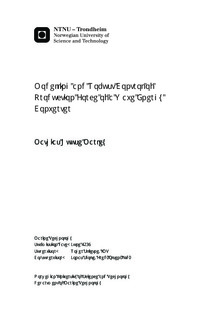| dc.contributor.advisor | Skjetne, Roger | nb_NO |
| dc.contributor.advisor | Sjolte, Jonas | nb_NO |
| dc.contributor.author | Marley, Mathias Huuse | nb_NO |
| dc.date.accessioned | 2014-12-19T12:12:56Z | |
| dc.date.available | 2014-12-19T12:12:56Z | |
| dc.date.created | 2014-09-13 | nb_NO |
| dc.date.issued | 2014 | nb_NO |
| dc.identifier | 746622 | nb_NO |
| dc.identifier | ntnudaim:11232 | nb_NO |
| dc.identifier.uri | http://hdl.handle.net/11250/239157 | |
| dc.description.abstract | Lifesaver is a point-absorber wave energy converter developed by Fred. Olsen. She is currently deployed off the coast of England for pre-commercial testing. Lifesaver consists of a toroidal floater supporting three Power-Take Off (PTO) units moored separately to the seabed. The mooring lines are kept taut by electrical generators.Large force oscillations have been encountered in the mooring lines during testing. The source of force oscillations is identified as velocity fluctuations in the PTO drive train due to sudden saturation of generator torque. The unfavorable transient response is a result of low stiffness in the mooring line combined with large inertia in the drive train. A numerical model of the mooring line and PTO unit is developed for use in control system development. The system dynamics are identified through a frequency analysis of a linearized model. Based on these findings a Kalman filter observer is developed to estimate force and force gradient from the angular velocity of the electrical generator. Three different controllers are proposed to mitigate the undesirable force oscillations. The first prevents sudden saturation by limiting the generator force gradient, and should be straight-forward to implement. Proportional-derivative (PD) feedback of the rope force is enabled by the Kalman filter, and is shown to effectively mitigate the unwanted behavior. However, PD feedback reduces the stability margin of the controller and must be implemented with care. A control algorithm using hysteresis is explored. The hysteretic controller behaves in a predictable and similar manner independent of the incoming wave, and has the potential of increasing robustness during high sea states. Real-time optimization of the main control parameter using extremum seeking is explored. The algorithm may be used to track a time-varying optimum due to changes in sea state. The adaptation rate is limited by the high peak-to-average power ratio of Lifesaver. | nb_NO |
| dc.language | eng | nb_NO |
| dc.publisher | Institutt for marin teknikk | nb_NO |
| dc.title | Modelling and Robust Control of Production Force of a Wave Energy Converter | nb_NO |
| dc.type | Master thesis | nb_NO |
| dc.source.pagenumber | 100 | nb_NO |
| dc.contributor.department | Norges teknisk-naturvitenskapelige universitet, Fakultet for ingeniørvitenskap og teknologi, Institutt for marin teknikk | nb_NO |

